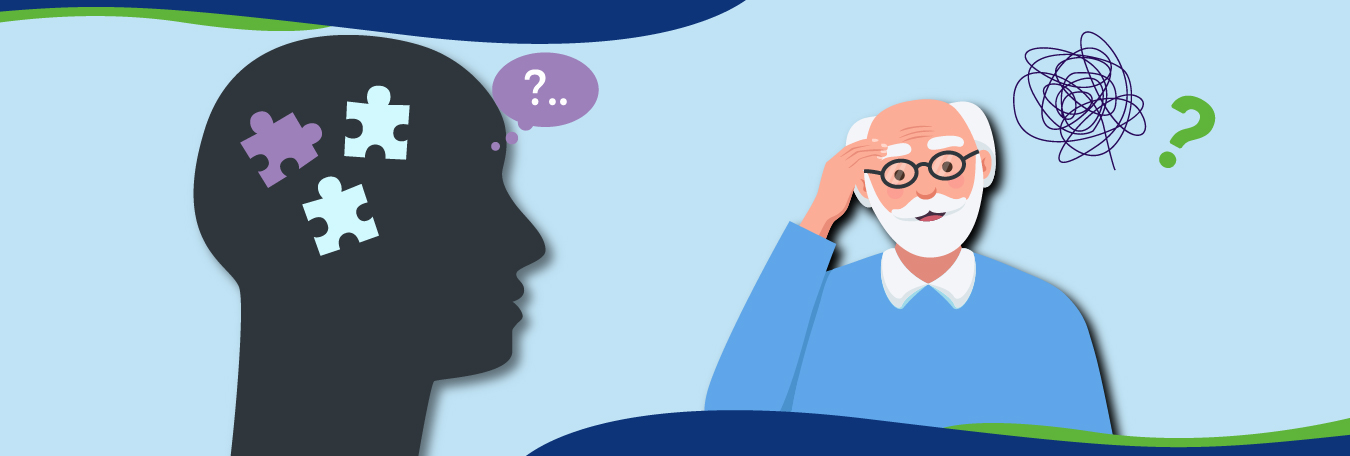People sometimes act or respond in ways they do not understand. They are not aware of their emotions and unresolved feelings, and they cannot access and interpret these thoughts. That is where psychodynamic psychotherapy comes into action. Psychodynamic therapy helps people understand the sources of their feelings and thoughts by identifying thought patterns, understanding conflicting emotions, and improving relationships. Although less common than psychoanalysis, both approaches trace their roots back to Freud. If psychoanalysis places therapists in an expert role, then psychodynamic therapists position themselves as a guide. In this blog, we will see what psychodynamic therapy is, what psychodynamic treatment is, and what to expect in this treatment.
What is Psychodynamic Therapy?
Psychodynamic therapy is a form of psychotherapy (talk therapy) that concentrates on finding the effects of the person’s subconscious thoughts, feelings, and memories on their current behavior. By understanding this, one can develop coping techniques and achieve therapeutic goals such as improving relationships and making better choices in life.

Psychodynamic psychotherapy, one of the oldest therapies of modern therapies, is based on a multifaceted and highly developed theory of human development and interaction. A psychodynamic theory in counseling explores the causes of anxiety or depression. Families may also turn to psychodynamic therapy techniques to examine difficult thoughts and recognize them. If one cannot express one’s emotions in words, there are different ways in psychodynamic psychotherapy. By expressing themselves through a different medium, people may enjoy an art or music-focused psychodynamic approach.
Read More: Transference-Focused Psychotherapy: Unlocking The Power Of Relationships In Therapy
Background of Psychodynamic Therapy
Psychoanalytic theory is the foundation of the theory underlying psychodynamic therapy. Psychodynamic therapy has been influenced by the four main schools of psychoanalytic thinking. Self-psychology, object relations, ego psychology, and Freudian psychology are the four schools.
Freudian psychology, often known as the drive or structural model, is founded on the theories initially developed by Sigmund Freud in the early years of this century. The core of Freud’s theory is that the ego manages aggressive and sexual forces that come from the id or unconscious. Ego mechanisms, known as defense mechanisms, work to reduce suffering and preserve psychological balance.
Freudian psychology is the source of ego psychology. Its proponents concentrate their efforts on preserving and improving ego function by reality’s needs. Ego psychology emphasizes a person’s ability to adapt, defend themselves, and test their reality.
This Object Relations theory says that important people in a person’s life always influence them. Our life challenges and objectives center on preserving our relationships with other people.

The term “self-psychology” describes how an individual perceives his or her experience of self, including whether or not they have a feeling of self-worth. One’s perception of oneself is based on how one sets boundaries with other people.
Distinct theories of personality formation, psychopathology formation, and change are presented by each of the four schools of psychoanalytic theory. They also provide methods for conducting therapy, as well as indications and contraindications for therapy.
Read More: Psychotherapy For ADHD in Adults
When to Use Psychodynamic Treatment?
Psychodynamic therapy is beneficial for many people, however, it might not be the best option for some individuals like substance use addicts or those dealing with specific mental health issues. This treatment focuses on the psychological roots of emotional suffering, and the goal is to help people live healthier lives.
Psychodynamic therapy is a good fit for self-reflective patients who are open to discussing their feelings because of its open-ended nature. To overcome suppressed emotions and unearth unconscious patterns, therapists collaborate closely with their patients.
Depression and other severe psychological illnesses are the conditions treated by psychodynamic therapy. It is beneficial for those who have lost their sense of purpose in life and struggle to establish or sustain interpersonal relationships. According to studies, psychodynamic therapy can also be used effectively to treat social anxiety disorder, eating disorders, pain issues, marital problems, and other issues. Children and teenagers benefit from this therapy, which is especially helpful in situations of bipolar disorder. This kind of therapy is less common, though, in cases of post-traumatic stress disorder (PTSD), schizophrenia, and psychosis. Psychodynamic treatment can be as long-lasting as therapies like cognitive-behavioral therapy, according to research.
When you are taking sessions for psychodynamic therapy for depression and anxiety disorders, then there might not be a need for psychiatric medication management. This treatment is enough to treat depression. However, in some cases, a combination of psychiatric medication management and psychodynamic psychotherapy is the best option.
Read More: What There’s To Know About Existential Psychotherapy?
Psychodynamic Therapy Techniques
People should explore their unconscious thoughts and responses through psychodynamic therapy approaches to get the life they deserve. Here are three such methods:
Free Association
Free association is a technique used in psychodynamic therapy to help patients examine their feelings and ideas. Therapists urge their clients to notice patterns and consider their emotions by letting them guide the process.
Projective Tests
Another technique in psychodynamic psychotherapy is the projective tests. Psychodynamic therapists may use techniques such as word association or inkblot tests to find out subconscious thoughts and feelings. Interpreting a person’s reaction is a common technique in psychodynamic therapy.
Dream Analysis
Dream analysis is also used by therapists to unlock the unconscious thoughts of patients, where a therapist guides them through dreams to understand hidden meanings and fears. Despite its subjectivity, this method can assist people in pinpointing their areas of improvement.
Read More: Defining Psychosis Supportive Therapy
How Effective Is Psychodynamic Psychotherapy?
Research backs up the effectiveness of psychodynamic therapy in treating a range of ailments despite this challenge. According to a review that was published in the American Psychologist magazine, psychodynamic therapy is effective. Psychodynamic therapy may be just as successful as cognitive-behavioral therapy (CBT), according to another study. According to a 2017 review that appeared in the American Journal of Psychiatry, psychodynamic therapy was just as successful as other well-known therapies.
While it is not as common as psychoanalysis, it is as effective as other psychotherapies. Maybe it cannot be used for the treatment of psychosis and OCD, but it can treat anxiety and depression more effectively than other therapies.
What to Expect from Psychodynamic Therapy?
The course of treatment is time-limited and typically lasts six months. Sessions run fifty minutes and are held once a week. Every week, the appointments will take place at the same time and location, and you won’t typically communicate with your therapist in between sessions. Your ability and willingness to stick with this commitment are crucial. It will be required of you to stop doing actions like drug use and excessive alcohol use.
Beginning of Session
Sessions of psychodynamic psychotherapy could appear to be unstructured. In addition to not offering you guidance or instructions on how to deal with your symptoms or challenges, your therapist will not recommend a topic or agenda for your sessions. Even if it doesn’t seem to be linked to your issues, you will be encouraged to discuss everything that comes to mind. After you get comfortable in therapy, your therapist will likely let you start the session with whatever comes to mind and not say anything at all. There could be times during sessions when the therapist is silent, and you might discover that they talk less than you would anticipate in everyday interactions.
Read More: Elucidating Integrative Psychotherapy
End of Session
During this process, you could be asked to consider any intense emotions you might feel towards the therapist, whether they are favorable or negative. Being honest about these emotions and working with your therapist to investigate their potential meanings and connections to other relationships, both past and current, are essential components of treatment. Psychodynamic treatment can be difficult and demanding. It is possible to evoke unpleasant and upsetting feelings and memories by concentrating on challenging and uncomfortable parts of yourself and your experiences that you often avoid thinking about. It’s normal for you to experience intense emotional reactions at the end of sessions, but it’s still necessary to discuss this with your therapist.
What We Discuss in Sessions
Your therapist plays an enabling role by possibly attempting to explain what you say and occasionally providing insights into the significance of an event. Your past experiences will be discussed, including any painful or embarrassing topics for you. Conflict patterns, obstacles to personal development, and unresolved issues that could be upsetting to you will be thoroughly considered, as well as your early and teenage years.
Best Place for Psychodynamic Therapy
If you are looking for psychodynamic therapy treatment, Inland Empire Behavioral Group is your best option. We offer clinical as well as telehealth services for psychodynamic psychotherapy. From depression and anxiety to OCD and PTSD, we provide multiple and customized treatment plans. Contact us now and get the services.
Read More: PTSD: Symptoms, Causes, Diagnosis and Treatment
Conclusion
Psychodynamic therapy has proven effective in helping people dealing with depression, anxiety, pain, and relationship issues. This treatment approach helps people see what is behind their problems by giving them a better understanding of their unconscious feelings, thoughts, and past experiences. Talking to a doctor about these emotional issues is necessary, and if your physician does not understand, the Inland Empire Behavioral Group is here to help you.




